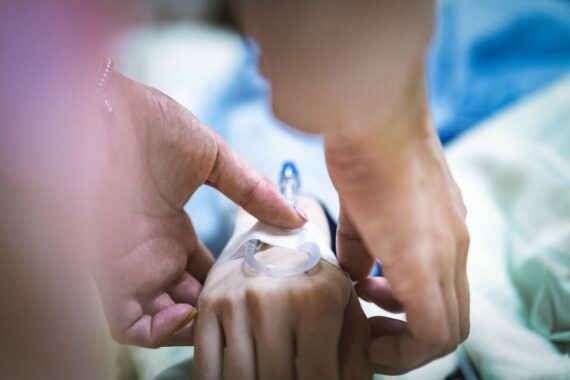Updated NICE guidance on identifying and managing sepsis in over-16s urges immediate hospital transfer for patients who meet any high-risk criteria.
GPs must pre-alert secondary care when they a patient with suspected sepsis is on their way – either directly or through the ambulance service, the recommendations state.
And in remote and rural locations where transfer time to emergency department is likely to be more than an hour, GPs should have mechanisms in place to start antibiotics straightaway, NICE said.
Altered mental state, raised respiratory rate, new need for oxygen, low blood pressure, raised heart rate or not passing urine, a mottled or ashen appearance, cyanosis or a non-blanching rash are all listed as high-risk factors that GPs should look for.
The partial update to the 2016 guidelines also provides new detail for secondary care teams on better targeting of antibiotics as more is learned about a patient’s condition as well as early use of broad-spectrum drugs within an hour in those who are most severely ill.
Doctors should use the NEWS2 risk score to assess those with suspected sepsis in those aged over 16 who are not or have not been recently pregnant and are in an acute setting or ambulance, the guidelines state.
NICE said use of NEWS2 should lead to more people with suspected sepsis graded at a lower risk level where treatment should begin within one to three hours and the diagnosis clarified before antibiotics are given, targeted at a specific infection if possible.
Figures suggest there are at least 245,000 sepsis cases diagnosed in the UK every year.
Professor Jonathan Benger, NICE chief medical officer said the guidance would help ensure antibiotics are targeted to those at the greatest risk of severe sepsis, so they get rapid and effective treatment.
‘We know that sepsis can be difficult to diagnose so it is vital there is clear guidance on the updated NEWS2 so it can be used to identify illness, ensure people receive the right treatment in the right clinical setting and save lives.
‘This update is the latest part of the process to ensure NICE guidance is as current as possible. We recognise this is a vital and rapidly evolving area, so this is the latest in a series of planned updates to our guidance.’
UK Sepsis Trust founder Dr Ron Daniels welcomed the update.
‘We particularly support that the update continues to recommend the identification of high-risk factors, whilst reinforcing the importance of clinical judgement to prevent injudicious use of antibiotics.
‘The recommendation for GPs and ambulance services to consider how they give antibiotics to people that are at high risk of sepsis is increasingly relevant as transit times increase, and could be potentially transformational in terms of patient outcomes.
He added: ‘We’re now presented with an opportunity to deliver a coordinated and cohesive approach to the recognition and management of sepsis across the NHS.’
Pulse October survey
Take our July 2025 survey to potentially win £1.000 worth of tokens















If NICE could “urge” proper funding and stop wasting time and money that would possibly help…..
https://www.pulsetoday.co.uk/news/urgent-care/video-gps-calling-ambulance-told-to-wait-until-patient-stops-breathing/
Perhaps NHS could staff the closed hospital adjacent to our GP surgery so that we could once again give IV antibiotics in a safe place before admission or transfer?
Duplication of facilities and stocks of drugs and equipment is not an option while GPs have inadequate funding too.
And especilly when Highways agency closes the road to our nearest DGH for a month, increasing travel time from 1 hour to about 90-100 minutes (assuming the ambulance arrives within the guaranteed 8 minutes!!)
In the back of my car. Again ?
https://www.itv.com/news/calendar/2023-01-09/former-army-gp-it-was-easier-to-get-patients-seen-in-afghanistan
NICE guidelines for noctors. Think doctors know this already.